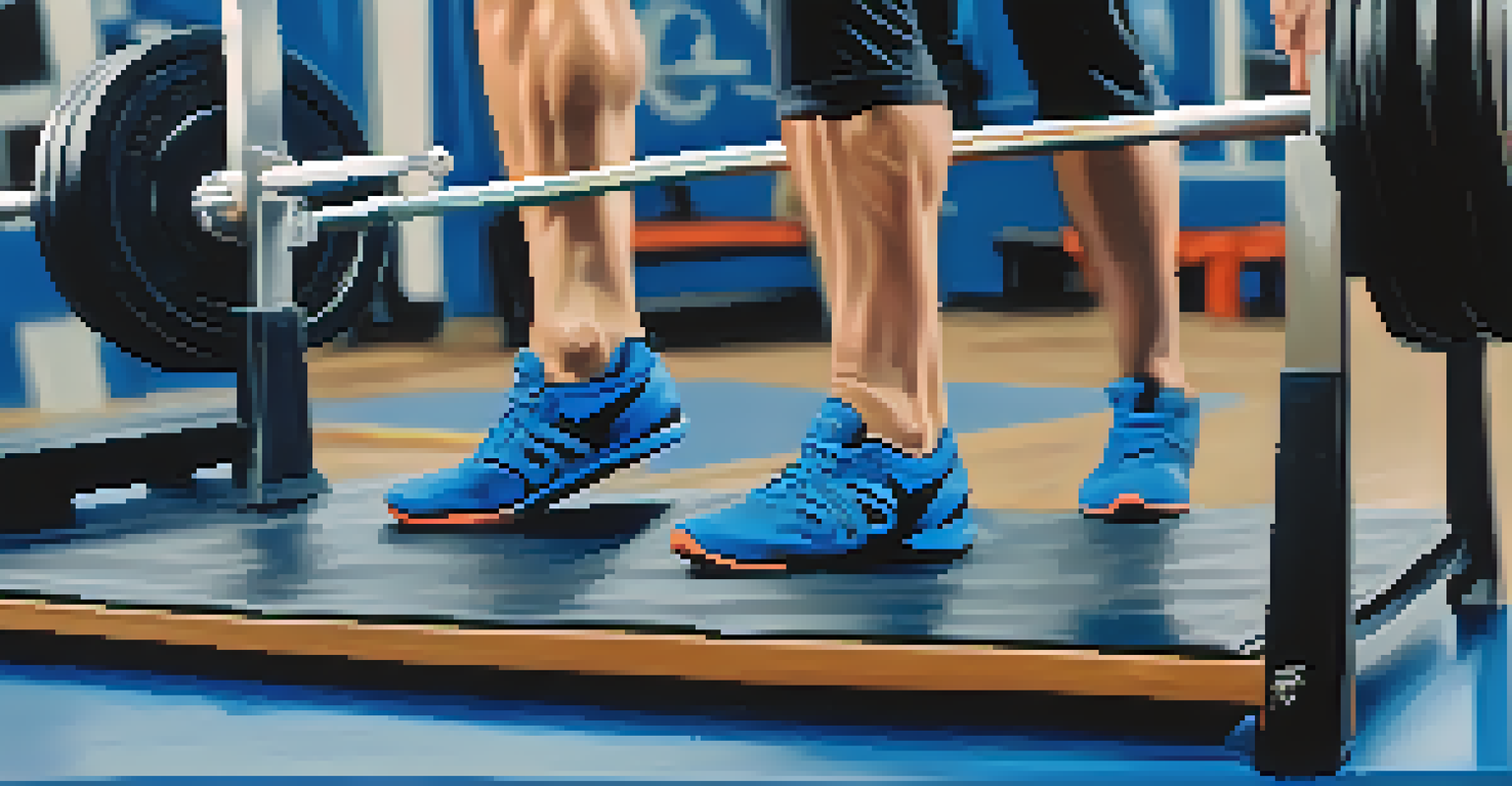Incorporating Mobility Work into Your Powerlifting Routine

Understanding Mobility Work and Its Importance
Mobility work focuses on improving the range of motion in your joints and muscles, which is crucial for powerlifters. This practice not only helps in executing lifts with proper form but also reduces the risk of injury. Think of it as oiling the hinges on a door; the smoother the movement, the better the performance.
Movement is a medicine for creating change in a person's physical, emotional, and mental states.
In powerlifting, where heavy weights are lifted, mobility can make the difference between a good lift and a great lift. It allows lifters to achieve deeper squats, maintain better posture, and generate more power throughout their movement. Without adequate mobility, even the strongest lifters may struggle to perform optimally.
By incorporating mobility work into your routine, you’re setting yourself up for success. It’s a proactive approach that addresses potential issues before they become injuries, ensuring you can train consistently and effectively.
Common Mobility Exercises for Powerlifters
There are several effective mobility exercises specifically suitable for powerlifters. Examples include hip openers like the 90/90 stretch, thoracic spine rotations, and ankle mobility drills. These exercises target areas that are often tight due to heavy lifting, helping to enhance your overall movement quality.

Incorporating dynamic stretches such as leg swings and arm circles before your workouts can also warm up your muscles and joints, preparing them for the heavy lifts ahead. These movements act as a bridge between static stretching and the explosive power required for lifting.
Mobility Work Enhances Performance
Incorporating mobility work improves flexibility and range of motion, leading to better lifts and reduced injury risk.
Remember, consistency is key. Aim to dedicate a few minutes before and after each workout to these mobility drills. Over time, you'll notice improvements in your flexibility and strength, which will positively impact your lifts.
When to Incorporate Mobility Work in Your Training
Timing is everything when it comes to integrating mobility work into your powerlifting routine. Ideally, you should perform mobility exercises both before and after your workouts. This not only helps in preparing your muscles but also aids in recovery after lifting heavy weights.
The body achieves what the mind believes.
Before your lifting session, focus on dynamic mobility to activate your muscles and improve your range of motion. On the other hand, post-workout mobility should emphasize static stretching to help your muscles relax and recover. Think of it as a warm-up and cool-down; both are essential for a well-rounded routine.
Additionally, consider including dedicated mobility sessions on your rest days. This can help maintain flexibility and prevent stiffness, keeping you limber and ready for your next lift.
Integrating Mobility into Your Warm-Up Routine
A well-structured warm-up routine can set the tone for your entire lifting session. Start with some light cardio to get the blood flowing, followed by mobility exercises targeting the specific joints you’ll use during your lifts. This could include hip flexor stretches and shoulder dislocates with a band.
Incorporate movements that mimic your upcoming lifts, such as bodyweight squats or push-ups, to prepare your body for the work ahead. This not only primes your muscles but also reinforces proper mechanics, helping you to establish good habits.
Consistency is Key for Mobility
Regularly dedicating time to mobility exercises before and after workouts helps maintain flexibility and strength.
By treating your warm-up as a critical part of your training, you’ll create a solid foundation for your lifts. It’s not just about getting ready; it’s about enhancing your performance and reducing the risk of injury.
Mobility Work for Recovery and Injury Prevention
Recovery is just as important as the lifting itself, and mobility work plays a significant role in this process. It helps alleviate muscle tightness and promotes better blood flow, which are essential for recovery after intense lifts. Think of mobility work as a massage for your muscles; it helps them relax and rejuvenate.
Incorporating foam rolling and stretching into your post-lifting routine can reduce soreness and improve your overall flexibility. This not only aids in recovery but also helps in preventing injuries that can derail your progress.
Ultimately, by prioritizing mobility work, you’re investing in your longevity as a powerlifter. The stronger and more flexible you are, the more resilient you’ll be against injuries, allowing you to keep pushing your limits.
Listening to Your Body: Adjusting Mobility Work
Every lifter is unique, and so are their mobility needs. It’s essential to listen to your body and adjust your mobility work accordingly. If you notice tightness in a particular area, spend extra time on those mobility exercises to address them specifically.
Monitoring your performance can also provide clues about your mobility needs. If you’re struggling with a lift or feel discomfort, this may indicate that you need to focus more on certain mobility drills. Keep a training journal to track your progress and any areas that require attention.
Listen to Your Body's Needs
Adjusting mobility work based on individual tightness and performance can lead to significant gains in strength and overall lifting capability.
Remember, mobility work isn’t a one-size-fits-all approach. It’s about finding what works best for you and being adaptable in your routine. This personalized approach can lead to more significant gains in strength and performance.
Conclusion: Elevating Your Powerlifting Game with Mobility
Incorporating mobility work into your powerlifting routine is not just an add-on; it’s an essential component of your training. By improving your flexibility and range of motion, you’ll enhance your lifts and reduce the risk of injury. Think of it as the secret sauce that can take your performance to the next level.
As you become more consistent with your mobility exercises, you’ll likely notice improvements not just in your lifts but also in your overall well-being. This holistic approach to training will make you a more resilient lifter, ready to tackle any challenge that comes your way.

So, take the time to prioritize mobility in your routine. It might just be the game-changer you need to elevate your powerlifting journey.